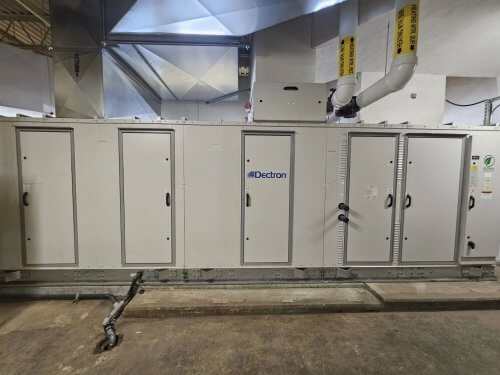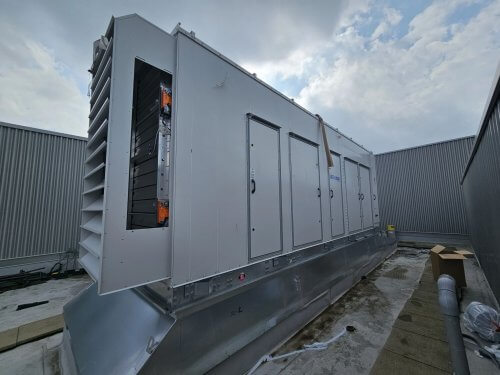
Achieving Efficiency in Indoor Pool Environment: The Crucial Relationship Between Pool and Space Temperature in HVAC Systems
As HVAC experts, we understand the intricate dance of factors that contribute to creating a comfortable and efficient indoor environment. One often-overlooked aspect is the relationship between the temperature of a pool and the space it occupies. Maintaining the pool temperature below the space temperature is not just a matter of preference; it’s a critical element in achieving efficiency and effective dehumidification. In this blog, we’ll explore the importance of this balance and its impact on indoor air quality and energy efficiency.
The Basics of Dehumidification
 Dehumidification is a key component of HVAC systems, especially in spaces with pools. When a pool is indoors, the water’s surface continually releases moisture into the air through evaporation. If the pool temperature is higher than the space temperature, the air above the pool becomes saturated with moisture, leading to high humidity levels. Effecting both dehumidifier size and operation and if not sized properly, this excess humidity can result in a range of issues, including discomfort, poor air quality, and even structural damage.
Dehumidification is a key component of HVAC systems, especially in spaces with pools. When a pool is indoors, the water’s surface continually releases moisture into the air through evaporation. If the pool temperature is higher than the space temperature, the air above the pool becomes saturated with moisture, leading to high humidity levels. Effecting both dehumidifier size and operation and if not sized properly, this excess humidity can result in a range of issues, including discomfort, poor air quality, and even structural damage.
The Relationship Between Pool and Space Temperature
To effectively control humidity in an efficient manner, it’s crucial to maintain the pool temperature below the space temperature. Here’s why:
- Preventing Excessive Humidity:
- When the pool temperature is higher than the space temperature, the air above the pool becomes saturated with moisture, leading to increased humidity levels.
- Excessive humidity can make the indoor environment feel clammy and uncomfortable, and it may contribute to the growth of mold and mildew.
- Directly impacting space dehumidifier size and operation.
- Enhancing Dehumidification Efficiency:
- Dehumidification systems work more efficiently when there is a temperature difference between the pool and the surrounding air.
- By keeping the pool temperature lower, the dehumidification process becomes more effective, removing moisture from the air more efficiently.
- Improving Indoor Air Quality:
- High humidity levels can lead to the release of volatile organic compounds (VOCs) from building materials, furnishings, and cleaning products.
- Controlling humidity by maintaining the pool temperature below the space temperature contributes to better indoor air quality and a healthier living or recreational space.
- Preventing Structural Issues:
- Excessive humidity can lead to structural problems such as corrosion, rot, and damage to building materials over time.
- By managing humidity through temperature control, you can help protect the integrity of the building and its components.
Energy Efficiency Considerations
 In addition to the comfort and health benefits, maintaining the pool temperature below the space temperature also aligns with energy efficiency goals. When the temperature difference is optimized, HVAC systems can operate more efficiently, reducing energy consumption and associated costs.
In addition to the comfort and health benefits, maintaining the pool temperature below the space temperature also aligns with energy efficiency goals. When the temperature difference is optimized, HVAC systems can operate more efficiently, reducing energy consumption and associated costs.
Conclusion
As HVAC experts, it’s our responsibility to educate clients about the intricacies of indoor climate control. Emphasizing the importance of maintaining the pool temperature below the space temperature for effective dehumidification is a crucial step toward creating a comfortable, healthy, and energy-efficient environment. By striking the right balance, we not only enhance the performance of HVAC systems but also contribute to the overall well-being of those who inhabit the space.
At O’Dell, we have been selling pool dehumidification solutions for over 35 years – we are here to help you get the right solution.


Leave a Reply